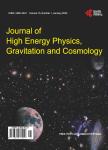Dark Matter Particles
Dark Matter Particles作者机构:Freelancer Livermore USA
出 版 物:《Journal of High Energy Physics, Gravitation and Cosmology》 (高能物理(英文))
年 卷 期:2023年第9卷第4期
页 面:1004-1020页
学科分类:07[理学] 0701[理学-数学] 070101[理学-基础数学]
主 题:World-Universe Model Multicomponent Dark Matter Multiworld Planck Mass XION Cosmic Gravitational Background Distribution of World’s Energy Density
摘 要:Researchers have been able to infer the existence of Dark Matter (DM) only from the gravitational effect. DM seems to outweigh visible matter roughly six to one, making up about 27% of the universe. Here’s a sobering fact: The matter we know and that makes up all stars and galaxies only accounts for 5% of the content of universe! But what is DM? [1]. Many experiments to detect and study Dark Matter Particles (DMPs) directly are being actively undertaken, but none have yet succeeded. Indirect detection experiments search for the products of the annihilation or decay of DMPs in outer space [2]. In this paper, we discuss main ideas of the Hypersphere World-Universe Model (WUM) and introduce an additional new DMP “XION (boson) with the rest energy 10.6 μeV that is an analog of Axion. On June 28, 2023, it was announced the existence of Cosmic Gravitational Background. In frames of WUM, we give an explanation of this discovery based on the analysis of “Gravitoplasma composed of objects with Planck mass, which were created as the result of Weak Interaction between XIONs and other particles in the Medium.



